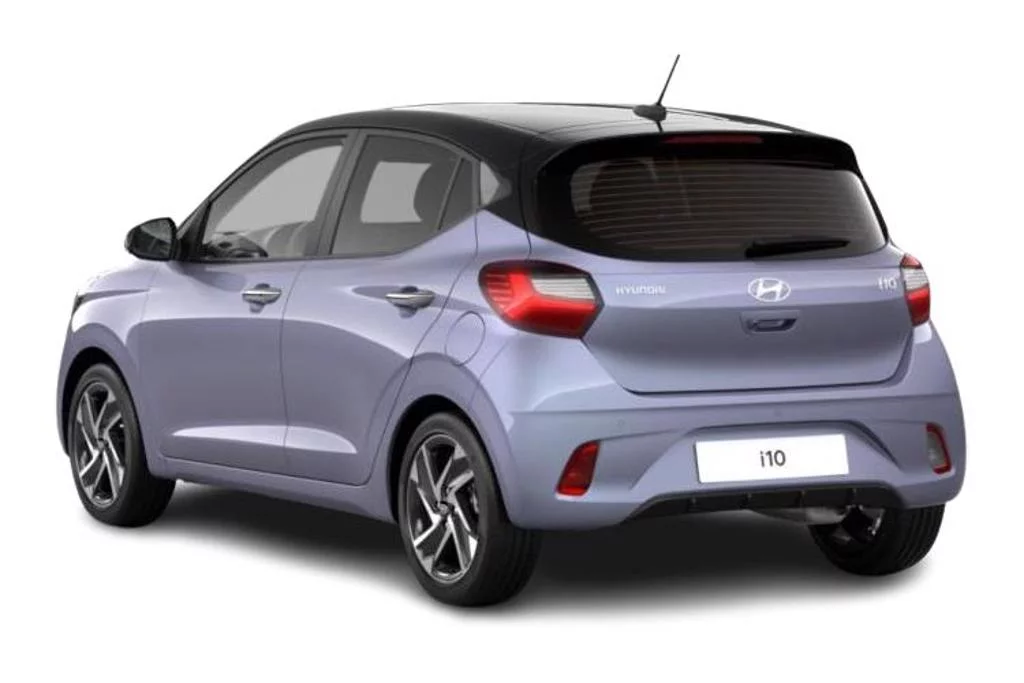Images shown are for illustration purposes only
-
119
g/km
CO2 emissions
-
54.3
mpg
Fuel efficiency
-
63
bhp
Engine power
- Start/Stop function
- Tailgate
- 2 front/2 rear speakers
- Rear USB-C device charger
- Steering wheel audio, phone and cruise controls
- Black finish on B pillars
- Body colour door handles
- Body coloured bumpers
- Flat metal emblem
- Front grille in glossy black
- Rear side wing doors
- Rear spoiler with integrated LED brake light
- 12v power outlet - front
- Bottle holders in front/rear doors + front centre console
- Cloth upholstery
- Front door pockets
- Glove compartment
- Heated steering wheel
- Height adjustable steering column
- Leather multifunction steering wheel
- Rear door pockets
- 3x3 point rear seatbelts
- Airbags - front, front side and curtain airbags
- Autonomous emergency braking (AEB) with forward collision warning system
- Childproof rear door locks
- Front and rear seatbelt reminder
- Front seatbelt pretensioners
- Passenger airbag deactivate switch
- Tyre pressure monitoring system
- Immobiliser
- Perimeter alarm
- Rear occupant alert
- Remote central locking
- Second remote key
- Smart key with motion sensor
- Speed sensitive auto door locking
- Standard Euro Emissions: EURO 6
- WLTP - CO2 (g/km) - Comb: 119
- Camshaft: DOHC
- Catalytic Convertor: True
- CC: 998
- Compression Ratio: 11.0:1
- Cylinder Layout: IN-LINE
- Cylinders: 3
- Cylinders - Bore (mm): 71
- Cylinders - Stroke (mm): 84
- Engine Layout: FRONT TRANSVERSE
- Fuel Delivery: MULTI POINT FUEL INJECTION
- Gears: 5 SPEED
- Number of Valves: 12
- Transmission: MANUAL
- WLTP - FC (l/100km) - Comb: 5.2
- WLTP - FC (l/100km) - Extra High: 5.7
- WLTP - FC (l/100km) - High: 4.5
- WLTP - FC (l/100km) - Low: 6.4
- WLTP - FC (l/100km) - Medium: 4.8
- WLTP - MPG - Comb: 54.3
- WLTP - MPG - Extra High: 49.6
- WLTP - MPG - High: 62.8
- WLTP - MPG - Low: 44.1
- WLTP - MPG - Medium: 58.9
- Badge Engine CC: 1.0
- Badge Power: 63
- Based On ID: N
- Coin Description: N
- Coin Series: Premium [Nav]
- Generation Mark: 3
- NCAP Adult Occupant Protection %: 69
- NCAP Child Occupant Protection %: 75
- NCAP Overall Rating - Effective February 09: 3
- NCAP Pedestrian Protection %: 52
- NCAP Safety Assist %: 59
- Safety Concerns: False
- Special Edition: False
- Special Order: False
- Timing Belt Interval Frequency - Months: N
- Timing Belt Interval Mileage: N
- Vehicle Homologation Class: M1
- Engine Power - BHP: 63
- Engine Power - KW: 47
- Engine Power - PS: True
- Engine Torque - LBS.FT: 69
- Engine Torque - MKG: 9.5
- Engine Torque - NM: 93
- Emissions Test Cycle: WLTP
- RDE Certification Level: RDE 2
- Alloys: True
- Space Saver: False
- Tyre Size Front: 195/45 R16
- Tyre Size Rear: 195/45 R16
- Tyre Size Spare: TYRE REPAIR KIT
- Wheel Style: N
- Wheel Type: 16" ALLOY




